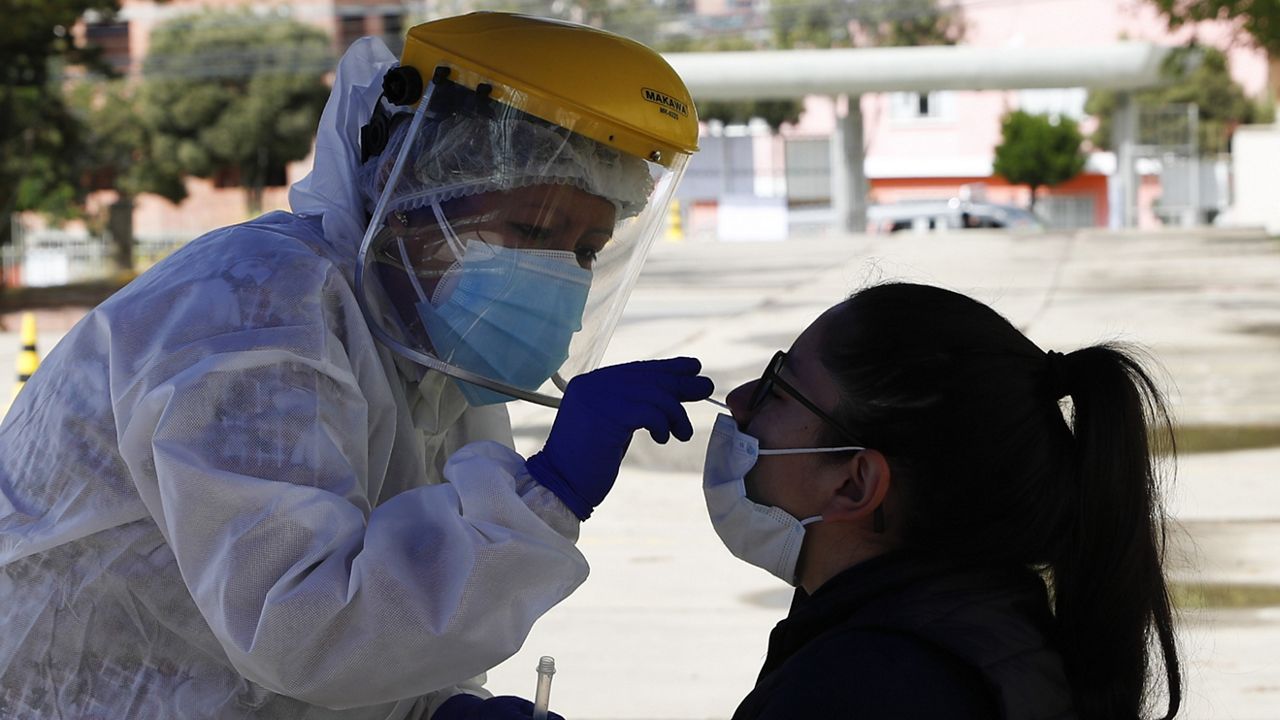The worldwide COVID-19 case count hit a grim milestone on Tuesday – topping 100 million, according to data from Johns Hopkins University – as the COVID-19 pandemic continues to rage globally.
The United States accounts for over a quarter of the world's cases at over 25 million.
The figure comes shortly after the one year anniversary of the first COVID-19 case being confirmed in Wuhan, China.
Experts have said that the worldwide case number is likely higher, as is the death toll, which sits at over 2.1 million worldwide, due to a lack of adequate testing and contact tracing. Over 421,000 Americans have died from COVID-19.
Global cases hit 25 million in August, then doubled in November; less than 3 months later, they doubled again to top 100 million.
Though COVID-19 vaccines have started to roll out worldwide, it will take some time to vaccinate enough of the population to reach herd immunity and defeat the outbreak.
In the United States, an increasing number of COVID-19 vaccination sites are canceling thousands of appointments because of vaccine shortages in a rollout so rife with confusion that even the new CDC director admitted she doesn’t know exactly how many shots are in the pipeline.
Amid the rising frustration, the Biden White House scheduled its first virus-related call with the nation’s governors Tuesday. President Joe Biden planned to give an update on efforts to bolster the vaccine supply and put more shots into Americans’ arms more quickly, press secretary Jen Psaki said.
The setup inherited from the Trump administration has been marked by miscommunication and unexplained bottlenecks, with shortages reported in some places even as vaccine doses remain on the shelf.
Dr. Rochelle Walensky, Biden’s brand-new director of the Centers for Disease Control and Prevention, was herself flummoxed over the weekend in trying to describe current supplies.
"I can’t tell you how much vaccine we have," she told Fox News on Sunday, describing the problem as a challenge left by the outgoing Trump administration. “And if I can’t tell it to you, then I can’t tell it to the governors, and I can’t tell it to the state health officials. If they don’t know how much vaccine they’re getting, not just this week, but next week and the week after, they can’t plan.”
As of Tuesday afternoon, the CDC reported that just over half of the 44 million doses distributed to states have been put in people’s arms. That is well short of the hundreds of millions of doses that experts say will need to be administered to achieve herd immunity and conquer the outbreak.
The U.S. ranks fifth in the world in the number of doses administered relative to the country’s population, behind No. 1 Israel, United Arab Emirates, Britain and Bahrain, according to the University of Oxford.
The reason more of the available shots in the U.S. haven’t been dispensed isn’t entirely clear. But many vaccination sites are apparently holding large quantities of vaccine in reserve to make sure people who have already gotten their first shot receive the required second one on schedule.
For the first time in weeks, however, the number of new daily cases in the United States has started to decline, though deaths per day remain high.
President Biden appeared to boost his goal for coronavirus vaccinations in his first 100 days in office, suggesting the nation could soon be injecting 1.5 million shots on an average per day.
Biden signaled on Monday his increasing bullishness on the pace of vaccinations after signing an executive order to boost government purchases from U.S. manufacturers. It was among a flurry of moves by Biden during his first full week to show he’s taking swift action to heal an ailing economy as talks with Congress over a $1.9 trillion relief package showed few signs of progress.
Biden reiterated that he believes the country is in a precarious spot and and that relief is urgently needed, even as he dismissed the possibility of embracing a scaled-down bill to secure passage faster. Among the features of the stimulus plan are a national vaccination program, aid to reopen schools, direct payments of $1,400 to individuals and financial relief for state and local governments.
“Time is of the essence,” Biden said. “I am reluctant to cherry-pick and take out one or two items here.”
Biden’s new vaccination target comes after he and his aides faced criticism for the 100 million goal in his first 100 days in office. The U.S. has exceeded a pace of 1 million doses per day over the last week.
“I think we may be able to get that to ... 1.5 million a day, rather than 1 million a day,” Biden said, “but we have to meet that goal of a million a day.”
Biden added that he expects widespread availability of the vaccines for Americans by spring, with the U.S. “well on our way to herd immunity” necessary to end the pandemic by summer. Even so, he warned the nation was going to be “in this for a while, and could see between “600,000 and 660,000 deaths before we begin to turn the corner in a major way.”
The Associated Press contributed to this report.
